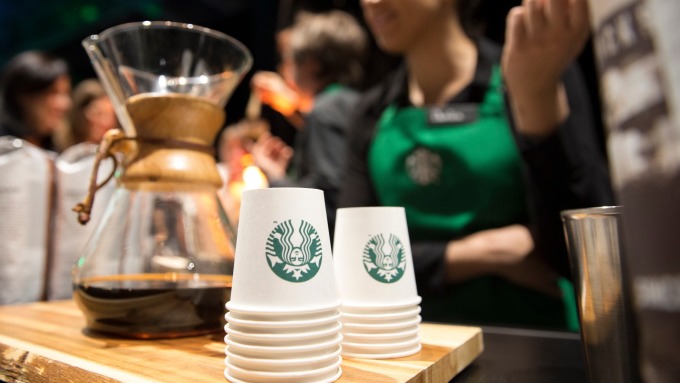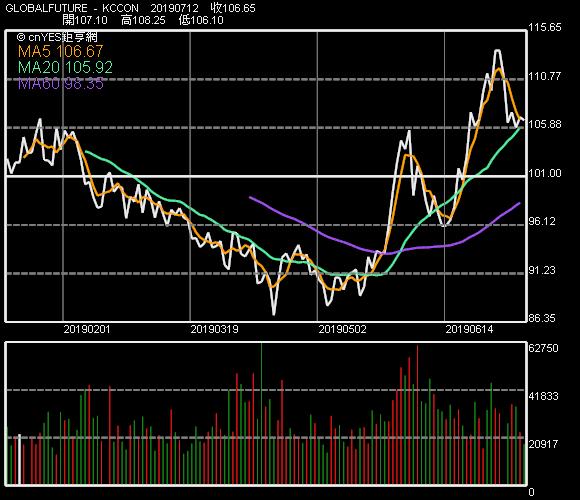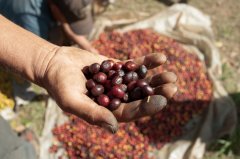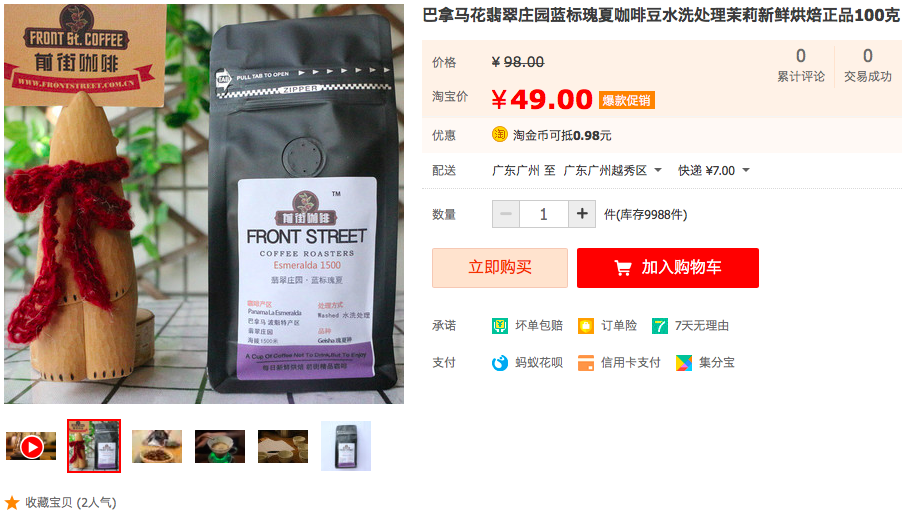Why is it that when the price of coffee beans collapses, it becomes more expensive for stores to sell cups of coffee?
Professional coffee knowledge exchange more coffee bean information please follow the coffee workshop (Wechat official account cafe_style)
If growers set a minimum price for coffee beans to help hard-working farmers get paid for their work, consumers may have to pay more for coffee.
Dozens of coffee plantation owners from Brazil to Colombia want to limit buyers' access to low prices of coffee beans to ensure that farmers are paid after a decade of plummeting global coffee market prices, according to the Wall Street Journal. Some industry experts estimate that if a base price is set, consumers may pay up to $2 more for each bag of retail bagged coffee.

Coffee maker Pan American Coffee Co., a national retail chain based in Hoboken, New Jersey. Sal Santuccio, head of coffee, said, "according to industry estimates, it is likely to rise by $1 to $2. "
According to the Wall Street Journal, coffee growers are setting a minimum price for coffee, following the practice of cocoa buyers. But it's the main ingredient of chocolate.
Recently, it has been widely rumored that coffee growers cannot afford to produce because the price is at a record low. Coffee farms charge about $2.50 per bag to make a profit, according to The Specialty Coffee Association's 2017 data. Industry insiders say coffee buyers need to be willing to cooperate better with coffee producers in order to improve conditions.
Yannis Apostolopoulos, executive director of Specialty Coffee Association, said, "the problems faced by coffee growers in maintaining profitable operations are complex and cannot be solved by consumers paying more. "
"the relationship between coffee producers and coffee buyers needs to be systematically changed, and we are exploring solutions to that goal," he said. "
However coffee experts do not believe that consumers will pay more for the coffee they drink in the short term and it may take six months to a year to see significant price changes if the minimum price of coffee beans is set.
The wholesale price of one pound of Arabica coffee beans has hovered around $1 since March, the lowest price in more than a decade. A pound of coffee powder can make about 48 cups of coffee. This kind of coffee beans is commonly used in large coffee chains including Starbucks.
But experts say consumers will still buy American coffee or lattes at the same price. Although wholesale coffee prices have been falling, consumer coffee prices have actually been rising.
The average price consumers pay for a cup of coffee for all restaurant categories, including fast food and formal, is $2.99, up 8 cents from last year, according to market research firm NPD Group. At the gourmet cafe, it is $4.24, an increase of 8 cents over last year. Some of the most upscale coffee drinks, such as those from Eleven Madison Park in New York City, are made from Wush Wush, a rare coffee variety from a proprietary farm in Colombia, which can cost up to $24 a cup.
At Starbucks, the best-known coffee chain in the United States, customers pay between $1.95 and $2.15 for a 12-ounce brewed coffee, depending on the location, after an increase of 10 to 20 cents in 2018.

Futures price trend of coffee beans in New York
What makes Arabica coffee beans different from other kinds
Brice Jones, co-founder of Freehold, a coffee shop, bar and gourmet bar in Williamsburg, Brooklyn, points out that a bag of proprietary Stumptown beans from Africa and Costa Rica costs as much as $10 a pound. Customers pay $2.50 for regular coffee and $4.25 for lattes.
"you don't know what Arabica coffee beans taste like," he said, "but we'd rather know where they come from and where producers use good farming practices and working conditions. "
Arabica coffee beans are usually sweeter and fruity than Robusta coffee beans with a bitter grain taste. More importantly, a wide variety of Arabica coffee beans are grown around the world, depending on where they are planted.
Lattes cost close to $1, estimated at 35 cents for milk, another 35 cents for coffee, 10 cents for environmentally degradable paper cups, and 10 cents for labor costs in the production process, Jones said.
"in New York City, when you buy a $10 bottle of Vodka & Soda water, no one blinks, but if you sell a $6 latte, people lose their minds," he said. "
Why is it still expensive to buy coffee in cafes and shops
Santuccio says his company has been paying $1.34 for a pound of unroasted and unprocessed Arabica coffee.
Two types of coffee are widely sold in the commercial market: Arabica coffee, which is of the highest quality and most affected by climate change, and robusta coffee, which can grow in warm conditions but is not very popular.
Just as the price of wine varies, such as Pinot Noir, Arabica coffee also has different varieties, some of which are more expensive, depending on where and how they are planted.
Pan American Coffee Co. Its business is roasting and packaging coffee beans, which are sold in bags at grocery stores such as WMT-US and Target (TGT-US) for between $4.99 and $8.
"the decline in the price of coffee beans does not necessarily mean that the price of retail bags will fall," Santuccio said. "you still have to pay for labor, baking, processing and packaging. "
Santuccio said it costs about $2.13 to produce a bag of coffee powder for retailers, excluding the cost of transporting and storing coffee.
Coffee has a long way to go from the farm to the kitchen
Nearly 40 per cent of coffee beans are grown in Brazil and 20 per cent in Vietnam, followed by Colombia, Indonesia and Honduras. But Brazil's overproduction and currency devaluation have led to a collapse in coffee prices. Compared with the dollar, the value of the Brazilian real is 60% lower than in 2011.
The low price of coffee beans has a negative impact on coffee farmers, who are unable to pay fees and make a profit, often leading to poor working conditions for coffee pickers and their families.
Last year, Starbucks pledged $20 million in emergency relief to farmers affected by low coffee prices in Central America. Noelle Novoa, a spokesman for Starbucks, declined to disclose how much Starbucks paid for a pound of wholesale coffee beans.
But she says there are many costs associated with buying and roasting coffee, quality assurance, and store design, product packaging, as well as transportation, distribution and labor research and development.
"at Starbucks, we only buy the best Arabica coffee," Novoa said. According to the standards set by Conservation International, about 99% of Starbucks coffee is ethical.
"the other 1% comes from the new origins we are exploring," she said. "We pay extra for it. "
Article source: Hang Heng net
Compiled by Zhang Zuren
END
Important Notice :
前街咖啡 FrontStreet Coffee has moved to new addredd:
FrontStreet Coffee Address: 315,Donghua East Road,GuangZhou
Tel:020 38364473
- Prev

Coffee farmers in rural Brazil will be able to use "coffee coins" for financing and purchase.
Professional Coffee knowledge Exchange more information on coffee beans Please follow the coffee workshop (Wechat official account cafe_style) Coffee farmers in rural Brazil. Through the plan of Coffea arabica (also known as Arabica Coffee) cooperative Minasul, they will soon be able to use cryptocurrency to meet their daily needs. Minasul is located in Minas in southeastern Brazil.
- Next

Rosy summer is not expensive! Blue standard rose summer half price 49 yuan 100g! Select rations and beans 9.9! Hang up 19.9 ears in the season
Professional coffee knowledge exchange more coffee bean information please follow the coffee workshop (Wechat official account cafe_style) super affordable! Very popular! Just this once! This special event [Qianjie Coffee] will present you with a selection of ears, six popular rations beans and thirteen boutique beans! A minimum discount of 50% for single beans! Popular food rations, beans, Yunnan small-grain coffee, water-washed Yega,
Related
- Customers have "changed" Manner's new products! Shop assistant: Please don't mess around!
- Remove sockets in customer areas at Starbucks stores?! Netizen: I won't go if I really tear it down
- What is the difference between the taste steps of sun-dried coffee and washed coffee? Why is sun-cured coffee sweeter and washed coffee sour?
- The recipe for salty grapefruit dirty is revealed! Coffee Festival salty grapefruit dirty coffee making materials parameters ratio milk share!
- How about the flavor of Sunlight 74158 at Sidamo Banshaha Mathieu Processing Factory in Ethiopia? 74158 Share the proportion of coffee brewing parameters!
- What effect does Italian American coffee with filter paper have? Will coffee taste better if it is put on filter paper at the bottom of the powder bowl?
- What is the color difference in coffee beans? What are the characteristics of honey processed coffee beans? Why are the anaerobically treated coffee beans uneven in color?
- How does novice Xiaobai quickly get started and make coffee? Newbies learn to make coffee by hand and share the specific steps and process process!
- Costa tea has a shelf life of 100 years?! Expert: Unable to verify
- It's a huge uproar! American milk addition was rejected by Manner employees?!

